Short, Sweet and Straight to the Point - Communicating Your Brand Position Quickly and Efficiently
“If you can’t state your position in eight words or less, you don’t have a position” – Seth Godin
I'm the first to admit that my writing will most likely never be described as "concise." While I don't always mean to, I've definitely fallen victim to the "why you one word when you can use 10" school of writing now and again.
However, when it comes to defining and communicating your brand's core mission, you would be wise to follow the words of Mr. Godin - shorter is definitely better.
Short, sweet and straight to the point is not only a good piece of advice for your every day communication, but it should also be a building block to keep in mind when creating a brand position or defining brand values. We've all heard of the elevator speech used to quickly sell yourself to someone in the length of an elevator ride, and in brand strategy development, a brand elevator speech can get your name to the top of the consumer's mind quickly.
Highlighting the impact of efficient communications when discussing who your brand is and what it stands for serves a number of positive purposes, including ensuring that the audience knows that you actually know what those values are. When you start to ramble on and speak in circles, a doubt begins to surface regarding how sure about that topic the speaker is, and in the case of discussing your brand position, that doubt can be the difference between a strong successful brand and a brand that falls flat.
Additionally, having the ability to quickly and succinctly communicate this aspect of your brand shows a sense of buy-in to what you're speaking about. You don't need to add filler words to try and justify the positioning to yourself - each of the words used serve a purpose to the greater quote and each spot is valuable.
Additionally, your consumers are attenuated with countless brands and an abundance of brand messaging - so much, that it often gets overwhelming and the consumer begins to shut out the noise, looking for the one brand that can get their message across in the shortest amount of time. If your brand starts its strategy with the mindset of efficient communications, it will most likely translate that same concept into all aspect of your brand - from a quick and easy to remember brand name to a tagline that follows the same principles.
Eight words to sum up what your entire brand stands for - eight words to encompass the emotional foundation for your brand strategy. That's not a lot, but it's definitely something to shoot for.
Addison Whitney is a global branding firm with a passion for building strong brands.
To learn more about Addison Whitney, visit our website at AddisonWhitney.com, or contact us here.
Keep It Simple: Timeless Advice for Great Logo Design
Today we are excited to have a guest blog from Senior Graphic Designer Dave Dixon!
Trusted. Reliable. Quality. Attributes that every company in the world would like to have consumers ascribe to their products and services. Or better yet, attributes that could be directly communicated to consumers via the company’s logo. But is it actually possible for a logo to convince the target audience of those things?
According to Logos Now, a report recently released by branding firm Siegel+Gale, the answer is almost certainly “no."
During the course of their research, the firm found that logos are significantly more likely to be described as “trusted,” “respected,” and “reliable” if the consumer is already familiar with the logo. On the other hand, unfamiliar logos received a higher rate of negative feedback, even in cases where a survey respondent wasn’t familiar with a logo that would otherwise be considered well-known.
So what exactly can a logo communicate to consumers?
Logos Now found that certain types of logos were more strongly associated with certain brand characteristics, such as “powerful,” “friendly,” or “sophisticated.” However, these descriptors can depend largely on current cultural factors and other outside influences; this is especially true for adjectives like “trendy” or “cool”. Other characteristics, like “traditional,” might be a bit easier to pin down – but that only works if a company wants to be seen as, well, traditional.
Perhaps not surprisingly, there is no easy shortcut on the road to positive public brand perception.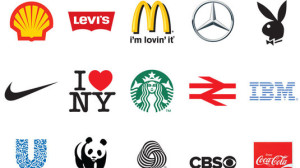
A company has to earn desirable associations, whether it be “trusted” and “reliable” or something more specific like “approachable” or “innovative.” When you boil it down, a logo is simply an identifier – a marker that successfully connects a company and its products with the (hopefully positive) attributes consumers have already assigned them. The more recognizable, the better.
Certain logos are undoubtedly better than others at creating a memorable and easily recognizable visual branding link in the minds of consumers. But what is it that makes them better at it?
Logos Now tells us the answer is, quite literally, to make them simple. That word was repeatedly and universally cited as an attribute of the logos that were also the most memorable. And while certain simple logos, like those for Apple and Nike, also represent some of the biggest and most well-known companies in the world, the formula of “simple = memorable” held true even among logos previously unfamiliar to survey respondents.
In turn, memorable logos were more likely to grab consumers’ attention, more likely to be described as unique in its category, and, perhaps most importantly, more likely to make consumers want to learn more about the brand.
All of that information may seem overwhelming, but it can ultimately be boiled down to a few straightforward points.
In fact, if this blog post had followed the advice laid out in the report, it might have dispensed with the previous 474 words, and instead just read: “Keep it simple."
Image Source:
https://www.creativebloq.com/50bestlogos
Addison Whitney is a global branding firm with a passion for building strong brands.
To learn more about Addison Whitney, visit our website at AddisonWhitney.com, or contact us here.
AW in Review - Addison Whitney Brand Salsa Recap 10.9.15
Welcome to another edition of "AW in Review", our roundup of our latest brand salsa and Addison Whitney news and posts!
Don’t forget, you can stay up-to-date with everything from Addison Whitney by joining the conversation with us on our social media channels – Twitter, Facebook, LinkedIn and Google+.
Would You Like a Minion Tic Tac? The Strategy of Brand and Consumer Product Tie-Ins
This morning, my 2-year-old son asked for his milk in a “Toy Story” cup, after requesting last night that I serve him “Minions” applesauce as he ate dinner on his “Cars” plate.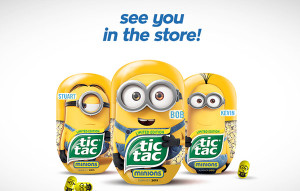
Now, this is either a testament to how demanding toddlers can be, or (and for the purpose of this branding-focused blog, this is the path we’re going to take) a testament to the success brands have when creating ties with everyday products. We’ve all seen the examples – everything from book bags and lunch boxes to toothbrushes and food items can be (and have been) branded in some way. Even more desirable is when the consumers begin to associate that particular item with that brand, as seen by my son’s descriptions of his requested items. Read More...
A Colorful Response
 “What’s your favorite color?” is a common question I get asked as a graphic designer. I usually respond with, “Well, what is the color being applied to?” Colors can make you feel a certain way. For instance, I like soft neutrals when it comes to painting my walls because it makes me feel calm, but bright red for a dress because I feel fun and exciting.” That’s my nerdy design answer to someone who was probably looking for a one-word answer like, “blue.”
“What’s your favorite color?” is a common question I get asked as a graphic designer. I usually respond with, “Well, what is the color being applied to?” Colors can make you feel a certain way. For instance, I like soft neutrals when it comes to painting my walls because it makes me feel calm, but bright red for a dress because I feel fun and exciting.” That’s my nerdy design answer to someone who was probably looking for a one-word answer like, “blue.”
But it’s true. In the article, What the Color of Your Logo Says About Your Company, Catherine Clifford states, “different colors are associated with different feelings.” She cites that 93% of purchasing judgments are made on visual perceptions and 84.7% of consumers cite color as their main reason for buying a particular product. Read More...
"Back to the Future" Branding
Sometimes, the best way to move forward is to take a look back. To look back at the best of what you have been in order to ensure the best that you will be.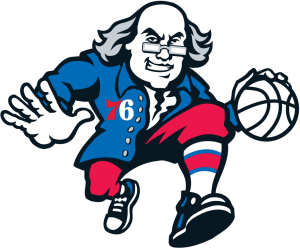
For brands, this rings especially true when working through a rebrand or a brand refresh. Especially when the brand you have is one of the few “iconic” brands on the market, coming with a built-in nostalgia and fond memories of the branding of yesteryear. However, this version of going back to the future comes with no worries of messing with the space-time continuum – in fact, tapping into a brand’s past can have positive impacts on its future. Read More...
How Your Brand Can Connect with Your Audience
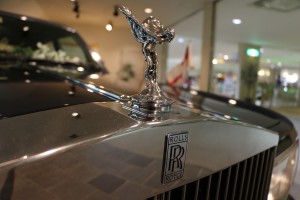 It’s no secret that one of the goals of a solid consumer brand strategy is to positively influence the brand awareness and connection with its intended customer base. We’ve all made purchasing decisions based on brands, and the best brand strategies have a goal to become one of those brands.
It’s no secret that one of the goals of a solid consumer brand strategy is to positively influence the brand awareness and connection with its intended customer base. We’ve all made purchasing decisions based on brands, and the best brand strategies have a goal to become one of those brands.
Connecting with your audience goes beyond logos and naming – it taps into creating a brand that has true, identifiable characteristics. People can’t tie their emotional purchasing to colors and words, but they can tie them to things that connect with who they are – or, who they’d like to be. Read More...
Addison Whitney is a global branding firm with a passion for building strong brands.
To learn more about Addison Whitney, visit our website at AddisonWhitney.com, or contact us here.
Would you like a Minion Tic Tac? The Strategy of Brand and Consumer Product Tie-ins
This morning, my 2-year-old son asked for his milk in a “Toy Story” cup, after requesting last night that I serve him “Minions” applesauce as he ate dinner on his “Cars” plate.
Now, this is either a testament to how demanding toddlers can be, or (and for the purpose of this branding-focused blog, this is the path we’re going to take) a testament to the success brands have when creating ties with everyday products.
We’ve all seen the examples – everything from book bags and lunch boxes to toothbrushes and food items can be (and have been) branded in some way. For brands, it is an established way to get their brand strategy elements directly connected with their consumer audience. Even more desirable is when the consumers begin to associate that particular item with that brand, as seen by my son’s descriptions of his requested items.
One of the most successful examples in recent memory is the aforementioned “Minions” brand tie-in with products across the consumer spectrum. In advance of the releases of both “Despicable Me 2” and their own “Minions” feature film, Universal Pictures took the chance to establish relationships with consumer brands that would spread the Minions to all corners of the consumer universe.
advance of the releases of both “Despicable Me 2” and their own “Minions” feature film, Universal Pictures took the chance to establish relationships with consumer brands that would spread the Minions to all corners of the consumer universe.
Partnering with brands such as Bounty, McDonald’s, Mott’s (the applesauce to which my son now only wants if there are Minions on the packaging), Chiquita – where it stuck Minion-themed stickers on over 500 million bananas - and many others, Universal has spent nearly $600 million in publicity, which is almost as impressive as the $593 million in ads and promotions delivered by these branding partners.
The yellow, goggled, gibberish-speaking characters have become an immensely powerful and popular brand extension for both Universal and their movie franchise – in fact, they’ve become a recognizable brand all their own. Not to mention, their namesake movie is on track to break the $1 billion mark in global sales, a number that undoubtedly owes some of its success to the overall branding efforts.
If there is one aspect of brand/product connection that can signal long-term brand success, it’s when the impact goes beyond the intended event.
For instance, the movie “Cars” was released almost 10 years ago (I couldn’t believe it’s been that long either), but its products still pepper the shelves 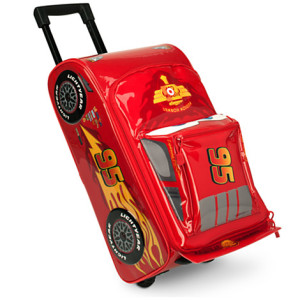 of toy stores and supermarkets today. Even kids who were years away from being born when the world was first introduced to Lightning McQueen and Tow Mater can recognize their characters immediately – all thanks to the existence of a successful brand/product relationship.
of toy stores and supermarkets today. Even kids who were years away from being born when the world was first introduced to Lightning McQueen and Tow Mater can recognize their characters immediately – all thanks to the existence of a successful brand/product relationship.
Not all relationships have these types of results, and the main reason for this is that they were disadvantaged by a weak initial brand. It’s not enough to create a brand strategy and associated brand elements and immediately put them on millions of cereal boxes and t-shirts – there must be a brand building period prior to the initial connection to give the products something to make them stand out.
Not to mention, the brand must be able to stand on its own, providing a positive connotation by association to the products. Much of the success of “Toy Story”-related products comes from the fact that the movies found widespread critical and audience acclaim, and gave us a set of timeless characters to which the products could focus upon. If the initial movie had bombed at the box office, it’s doubtful that Buzz Lightyear Halloween costumes would be seen trick-or-treating around the country.
So next time your child runs up to you in the store grasping a Mickey Mouse shampoo bottle or goes to sleep on their “Frozen” bed sheets, take the time to appreciate the branding efforts that went into making these connections and products possible.
Image Sources:
https://www.disneystore.com/lightning-mcqueen-rolling-luggage/mp/1379191/1000366/
https://www.brandchannel.com/2015/07/10/minions-movie-marketing-071015/
Addison Whitney is a global branding firm with a passion for building strong brands.
To learn more about Addison Whitney, visit our website at AddisonWhitney.com, or contact us here.
“Back to the Future” Branding
Sometimes, the best way to move forward is to take a look back. To look back at the best of what you have been in order to ensure the best that you will be.
For brands, this rings especially true when working through a rebrand or a brand refresh. Especially when the brand you have is one of the few “iconic” brands on the market, coming with a built-in nostalgia and fond memories of the branding of yesteryear.
However, this version of going back to the future comes with no worries of messing with the space-time continuum - in fact, tapping into a brand’s past can have positive impacts on its future.
For instance, the Philadelphia 76ers basketball team has a two-pronged historic foundation to which it can build its brand refresh. Not only are they one of the oldest and most successful franchises in the NBA, but their home city also doubles as the birthplace of America.
So for their new branding efforts, they tapped into these two reservoirs of history and came up with a new brand that touches on both – for instance, their new uniforms are reminiscent of the ones the team wore in the mid-1970s, while they introduced a "dribbling Ben Franklin" alternate logo to go along with new television ads referencing the American Revolution – which was also the original influence for the team’s name.
Evolving a brand with a nod to its history is a great way to connect with your entire consumer audience – not only will you reach those who are excited about the rebranding efforts and the new aspects that come from it, but you’ll also have the automatic tie-in with those who remember fondly the “golden years” of your brand.
From a design standpoint, tapping into a well-regarded and well-received visual branding element from your past also prevents the chances of over-thinking a new design, where in an effort to develop something new and revolutionary comes out as off-base and not in line with your brand strategy. For these longtime brands, there’s a chance that the best design path is right there in the archives, and with a little touch-up, you can put forth a brand strategy and design that is both modern and historical.
Miller Lite, who had seen recent sales slides and was losing competitive share to its rivals in the U.S., looked to its past for what was originally meant to be a temporary brand shakeup, but has 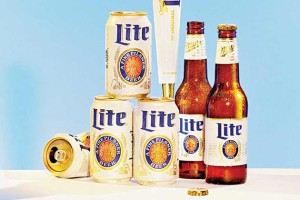 turned into a permanent new visual branding look. In conjunction with an advertising campaign centered around the release of the movie Anchorman 2 (set in the 1970s), the brand re-released its classic circa-1975 white Miller Lite can, complete with the retro logo design.
turned into a permanent new visual branding look. In conjunction with an advertising campaign centered around the release of the movie Anchorman 2 (set in the 1970s), the brand re-released its classic circa-1975 white Miller Lite can, complete with the retro logo design.
As for the result? Well, the numbers speak for themselves – the brand sold 32 million more cans during the campaign run compared to the same time the previous year, and has now expanded the nostalgic branding to its bottles and taps.
And don’t forget, just like every other aspect of branding, you have to follow the mantra of Tim McDermott, who is the 76ers CMO: “A brand isn’t just a TV spot. It is your soul, your DNA. It has to permeate through every fiber of the company.”
Image Sources:
https://espn.go.com/nba/story/_/id/12865822/sixers-score-ben-franklin-logo
https://www.bloomberg.com/bw/articles/2014-09-11/miller-lites-original-label-sales-boost
Addison Whitney is a global branding firm with a passion for building strong brands.
To learn more about Addison Whitney, visit our website at AddisonWhitney.com, or contact us here.
How Your Brand Can Connect With Your Audience
It’s no secret that one of the goals of a solid consumer brand strategy is to positively influence the brand awareness and connection with its intended customer base. We’ve all made purchasing decisions based on brands, and the best brand strategies have a goal to become one of those brands.
Connecting with your audience goes beyond logos and naming – it taps into creating a brand that has true, identifiable characteristics. (And, as we mentioned in a previous post, it is crucial that your employees positively reflect those characteristics.) People can’t tie their emotional purchasing to colors and words, but they can tie them to things that connect with who they are – or, who they’d like to be.
For instance, with luxury branding, these strategies are tapping into the lifestyle those brands represent – wealthy, comfortable, high quality, etc. It’s no coincidence that these same characteristics are ones to which people aspire. These brands know that if they can become the living embodiment of wealth, for instance, their audience and potential consumer will connect an achievement of wealth with the acquisition of their product. That they can show those around them that they “made it” when they are in possession of a specific brand.
are ones to which people aspire. These brands know that if they can become the living embodiment of wealth, for instance, their audience and potential consumer will connect an achievement of wealth with the acquisition of their product. That they can show those around them that they “made it” when they are in possession of a specific brand.
A one-time purchase because of a brand connection can be deemed a branding success, but brand loyalty is an entirely difference level of this concept.
These brands are truly the crème de la crème when it comes to establishing long-lasting, unwavering loyalty with their audience. They have created such a strong connection that their consumers have adopted the brand’s characteristics as their own. They have begun to “be” the brand – as much as someone can be. From getting the brand’s logo tattooed on their body, to only buying that one brand’s products when available, to their seeing themselves as unofficial brand ambassadors, they have become not just a consumer, but a fan.
And for brands, this transition is a big step in the direction of creating a long-lasting brand success.
So the question is, how do you create these connections and how to you develop a legion of "brand fans?"
 The answer lies, again, with how your personalize your brand. Creating characteristics is a good start, but the work really begins by taking a look at the brand before looking forward. What emotional response does your brand create? What types of personality or lifestyle traits can be believably connected to your brand?
The answer lies, again, with how your personalize your brand. Creating characteristics is a good start, but the work really begins by taking a look at the brand before looking forward. What emotional response does your brand create? What types of personality or lifestyle traits can be believably connected to your brand?
Once these are decided, the rest of the brand strategy can begin to come to fruition, and as it does, the various brand aspects should in some way tie back to the characteristics, driving forward the overall connection with the brand.
Addison Whitney is a global branding firm with a passion for building strong brands.
To learn more about Addison Whitney, visit our website at AddisonWhitney.com, or contact us here.
Don't Just Be a Brand - Live Your Brand
“Your Entire Company Should be Considered Your Branding Department.”
For both companies who are looking to create a build their brands to those who have set the benchmark for brand strength and longevity, this quote should stand as a mantra for creating a business culture where the core brand principles run throughout those in the organization.
It is one thing to “be” a brand, with a solid brand foundation built on the principles to which your brand stands, but to “live” the brand is to carry these same principles into your work and your interactions with those around you.
And this is how you truly spread the brand strategy to its fullest extent.
Every good brand portfolio and brand strategy should include actionable and personified elements, such as a brand personality and values. These are just two of many that make up a brand, but these elements are the ones best designed to be shown through the actions of your employees.
Those in your organization are the living, breathing, interacting faces and voices of your brand, who could potentially do more good (and also more bad) for it than any other aspect. You can have the world’s greatest logo, one that pops off advertisements and stands out among competitors, but if your own employees don’t believe in the brand characteristics for which that logo represents, then your brand strategy has a major flaw, and will continue to be playing from behind.
Another way to look at the concept of having your entire company be your “branding department” is that the widespread consumer mindset trusts individuals and in-person examples more than they trust advertisements and marketing materials. If they interact with an employee who truly understands how to live the brand and serves as a positive brand ambassador, then that impact will far outweigh what they see from a marketing standpoint.
As I mentioned before, this can also work the other way, which is often where the most problems arise. Especially for brands with established brand personalities, when an employee doesn’t embody those same characteristics, the uncertainty that arises about a brand can do great damage to its perception. This doesn’t just go for one-on-one interactions with consumers, but it also encompasses the actions of those same employees when working on behalf of the brand. Ethical breaches, crisis response, blatant mistakes that cause harm – they are all examples of not living up to the brand standard.
From the very top of your organization all the way down, your brand should be present in all of your employees and in how they act, speak and carry themselves – a strong brand is only as good as those who live it.
Addison Whitney is a global branding firm with a passion for building strong brands.
To learn more about Addison Whitney, visit our website at AddisonWhitney.com, or contact us here.
AW Spotlight - Meet our Newest Team Members!
At Addison Whitney, our people are our most valuable resource. We are lucky to have such a talented group working throughout our offices, and in our AW Spotlight series we wanted to spotlight our employees, finding out more about who they are, and their thoughts on working at Addison Whitney.
This special edition of AW Spotlight features three of the newest members of the AW team - Account Director Michael Ryan, Project Manager Kathryn Pearce and Senior Graphic Designer Dave Disxon. All three joined Addison Whitney recently and have been very welcome additions to the company and to our Charlotte office!
Let's find out some more about these talented AWers:
Michael Ryan, Project Director
What has been the most surprising aspect of working with Addison Whitney so far?
The incredible talent and expertise the team possesses as a whole, along with the amazing teamwork. Everyone is extremely knowledgeable and very helpful in whatever you may need. Great work atmosphere.
What is your favorite brand and why?
My favorite brand is Mercedes. It represents one of the oldest and most respected automotive brands in the world. Mercedes is a brand that has pushed the envelope for years and continues to grow and change over time. Mercedes is adaptable and clearly defined. This is a brand that stands for high standards and engineering excellence.
What is something about you that would surprise people?
I am an award winning cook! I cook for both relaxation and enjoyment
Kathryn Pearce, Project Manager
What has been the most surprising aspect of working with Addison Whitney so far?
The environment is the most surprising aspect. For my first real job outside of college, I had the expectation that no one would remember my name or want to know anything about me, but on my first day I sat in on a call and the consultant introduced me to the client, saying my first and last name! I was shocked as I had just met him! Everyone here is so friendly and wants to know who you are, so I felt right at home my first week of work!
What is your favorite brand and why?
I think that Dove would have to be my favorite brand. Not the soap, but the chocolate. I love chocolate, maybe a little bit too much - I probably need a frequent flyer card for how many of their products I buy!
What is something about you that would surprise people?
I think that I am a very awkward person. I say it all the time, my friends make fun of me for it because they say I’m the least awkward person and that I could make friends with a brick wall. For how outgoing and personable I come off as, I think inside I just feel like I’m really awkward and feel like I’m in awkward situations.
Dave Dixon - Senior Graphic Designer
The most surprising aspect of working at Addison Whitney:
Perhaps that a small company with a group of cool and extremely creative people are hidden among the big buildings and big companies that seem to dominate the Ballantyne area.
My favorite brand:
I’m not sure I really have a favorite brand, but one that’s generated a lot of customer loyalty with me is Levi’s. Between the jeans themselves and the ads surrounding them, they’ve really managed to find that sweet spot of "effortless cool”.
What would surprise people about me:
I’m a huge nerd when it comes to the aesthetics of sports uniforms, and specifically soccer. I was featured as a guest writer on ESPN.com’s Uni Watch column, providing a breakdown of the uniforms for all 32 teams in the 2006 World Cup. Most of the image links are broken at this point, but here’s the link.
Addison Whitney is a global branding firm with a passion for building strong brands.
To learn more about Addison Whitney, visit our website at AddisonWhitney.com, or contact us here.
Are We Nearing the End of the iPhone Brand?
iPhone. At first glance, a funny-looking word. But now, a word that is synonymous with a technological revolution lead by Apple to transform the concept of a phone into something different – a helper, a messenger, a navigator, a photographer and more – with each evolution.
From a brand perspective, the Apple iPhone has to be one of the most recognizable consumer product brands in history, a household name like Tide or Coca-Cola, but at 300 times the investment.
The recognition for the brand is what poses our question. - Will the iPhone brand live forever? Or will it be replaced by an updated brand by Apple – an “ApplePhone” or something of the like?
The first question has to be “why?” Why would anyone ever remove the iPhone brand from the portfolio?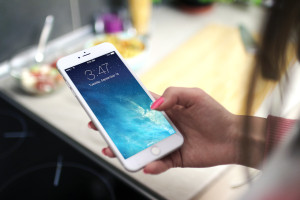
Well, for one, we are seeing a strategy shift from Apple to be more master-branded; that is, leveraging the “Apple” brand at the product level. We’ve now been introduced to the Apple TV, Apple Watch and Apple Pay, all backed by Apple Support. So simply from a brand portfolio strategy perspective, Apple Phone could be on the horizon.
A more likely reason for the change is that at some point the word “phone” in iPhone does not best represent the primary use of the device. Already, I would bet that a much greater percentage of time using an iPhone is spent browsing the internet, reading or listening to music, versus talking on the phone or even communicating through text message. At what point should iPhone be called something other than a phone?
This is true for the entire category – but could be a turning point for the product brand to make a stance and become AppleWhateverIsNext.
As it relates to whatever is next idea – how long can the number/letter extension garner the excitement Apple needs when launching a new device? iPhone 1,2,3,4,5,6, s, c and so on, sooner or later the name loses its luster. Is the change from iPhone 14 to iPhone 15 equally as exciting as the move from 4 to 5? Apple has used other extensions in the past (like nano, air, pro, etc.) but no naming strategy has been used as consistently as the number/letter system has been in the iPhone portfolio.
 Still, there will always be arguments that iPhone is here for good. The “i” platform was surely revolutionary at its launch. With what used to be the iPod, iPad, iMac and iTunes, the portfolio was set. Even as I use “iTunes” as an example, the future for that brand is unclear, with Apple launching Apple Music, a streaming music provider that may eventually replace iTunes, which may be a telling sign for the iPhone.
Still, there will always be arguments that iPhone is here for good. The “i” platform was surely revolutionary at its launch. With what used to be the iPod, iPad, iMac and iTunes, the portfolio was set. Even as I use “iTunes” as an example, the future for that brand is unclear, with Apple launching Apple Music, a streaming music provider that may eventually replace iTunes, which may be a telling sign for the iPhone.
Apple must know what is at stake if the iPhone is transitioned – years of equity and the risk associated with changing the name of one of the top selling technology products in history. That being said, Apple has never been afraid to support product launches and changes with huge amounts of money to educate the populous.
One thing is fairly certain, whatever the product is called in the future – personal technology by Apple will continue to be innovative and excite the industry and loyal brand advocates.
What do you think? iPhone forever? Or ApplePhone by 2017?
Addison Whitney is a global branding firm with a passion for building strong brands.
To learn more about Addison Whitney, visit our website at AddisonWhitney.com, or contact us here.
AW in Review: Addison Whitney Brand Salsa Recap 9.11.15
Welcome to another edition of "AW in Review", our roundup of our latest brand salsa and Addison Whitney news and posts!
Don’t forget, you can stay up-to-date with everything from Addison Whitney by joining the conversation with us on our social media channels – Twitter, Facebook, LinkedIn and Google+.
College Football's Top 5 Brands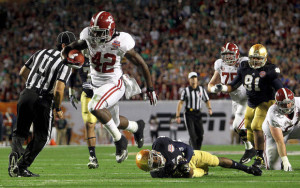
College football is a big-time player in the American sports scene, with billions of dollars spent and millions of fans heading to the stadium each weekend. With this enormous influence in our sports culture comes the emergence once again of brands who rival the biggest corporations in the world in terms of their brand equity.
With this list, I attempt to rank the top five brands in college football today – and as with any list, there is sure to be some friendly disagreement on who is on the list, where they are ranked and who I snubbed. I looked at the brands who are the first to come to mind when thinking of the sport in general, for whatever reason – and those reasons were varied. Read More...
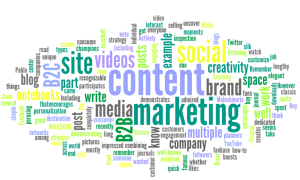 4 Ways Content Marketing Can Help Build Your Brand
4 Ways Content Marketing Can Help Build Your Brand
Content marketing and branding should go hand-in-hand. However, there is often a disconnect between a brand strategy and the strategy around content creation, leading to a situation where an important aspect of brand cultivation is going untapped, without realizing the potential it has to move a brand forward.
But how can we bridge the gap between the two? Here are four ways content marketing can help build your brand. Read More...
Brands Find Ways to Reinvent Themselves for Foreign Markets
There’s always been a mystery associated with foreign brands, but some have found ways to use their homegrown origins to give themselves a completely different brand image in foreign countries.
For instance, Pabst Blue Ribbon has taken its authentic reputation as an American Icon and repositioned itself in Asian markets as a luxury beer. To an American who has never paid more than a dollar for a can of PBR, this may seem ridiculous. However, American exports often already connote luxury and high price point, so by emphasizing its American roots, PBR was able to ride on the wave of other authentically luxury exports from the United States. Read More...
Addison Whitney is a global branding firm with a passion for building strong brands.
To learn more about Addison Whitney, visit our website at AddisonWhitney.com, or contact us here.



